Gochujang Meatballs
Get ready for a flavor explosion that will make your taste buds do a happy dance! These gochujang meatballs deliver that perfect sweet-spicy-savory Korean punch that’s absolutely irresistible. They’re crispy on the outside, juicy on the inside, and glazed with a sauce so good you might be tempted to lick the plate.
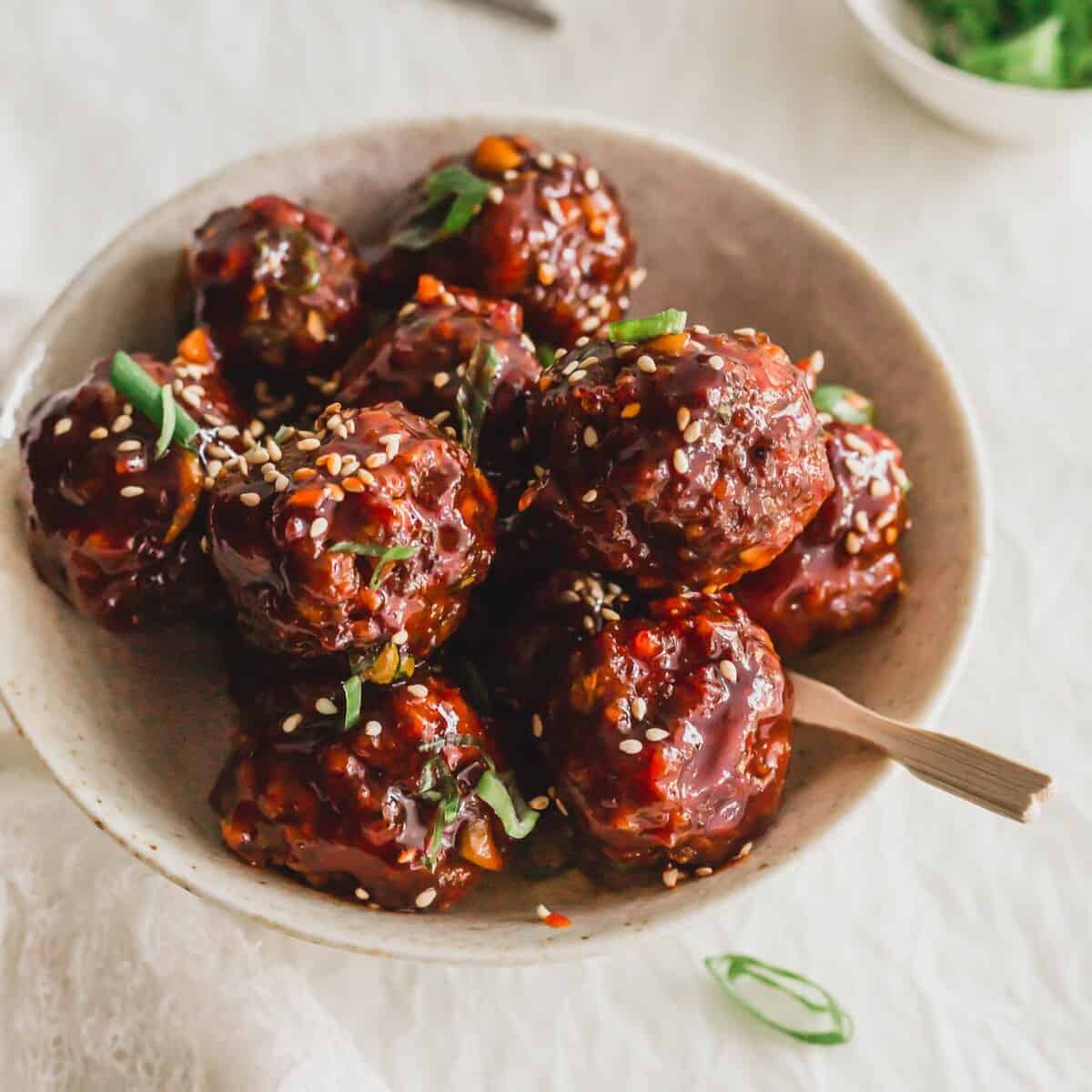
What makes these meatballs special is the gochujang—that gorgeous Korean chili paste that brings complex heat without overwhelming your palate. The glaze caramelizes slightly when cooked, creating this sticky, glossy coating that’s practically begging to be photographed (if you can wait that long before diving in). Perfect as an appetizer that’ll disappear in seconds or paired with rice for a complete meal that’ll have everyone asking for the recipe.
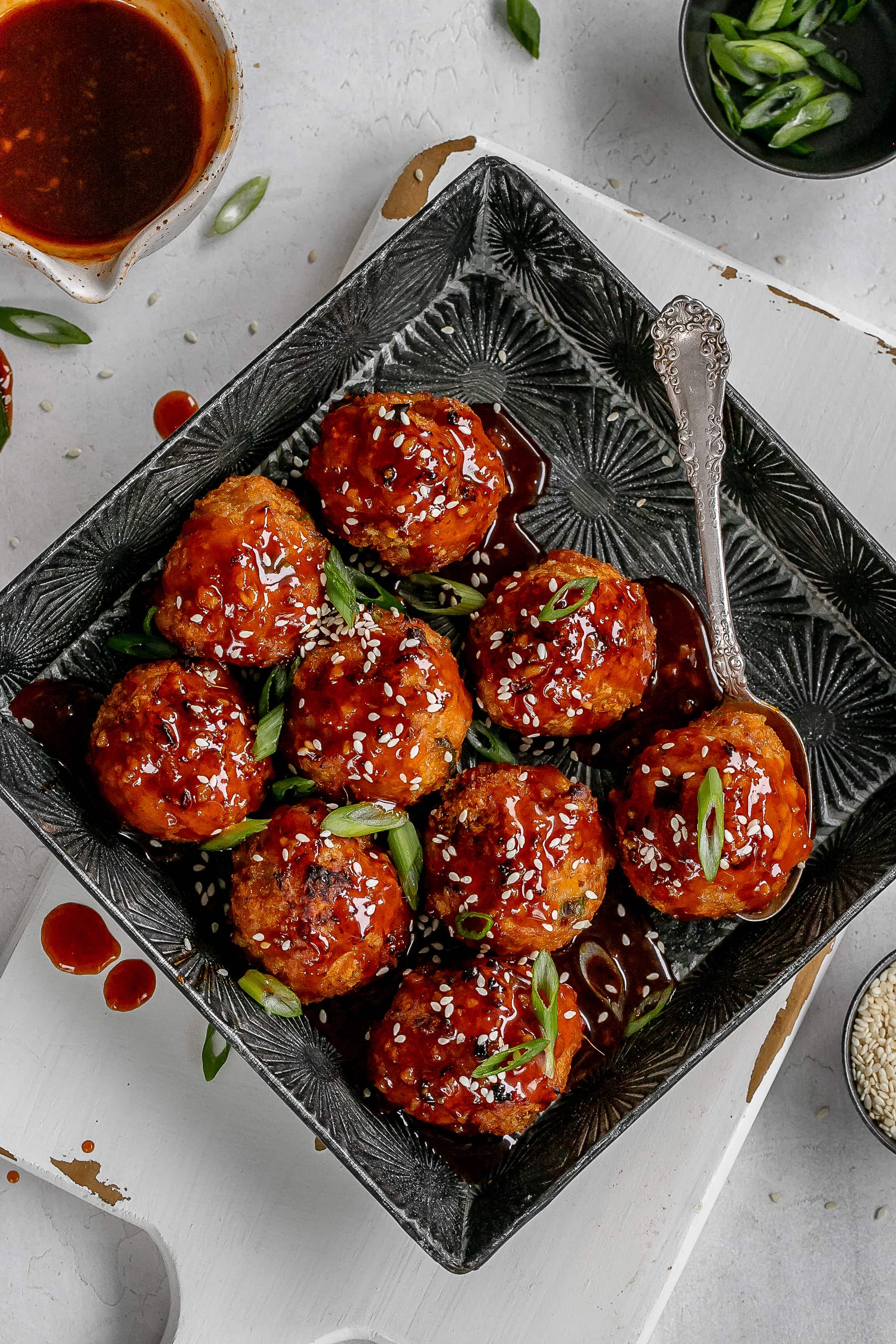
Ingredients
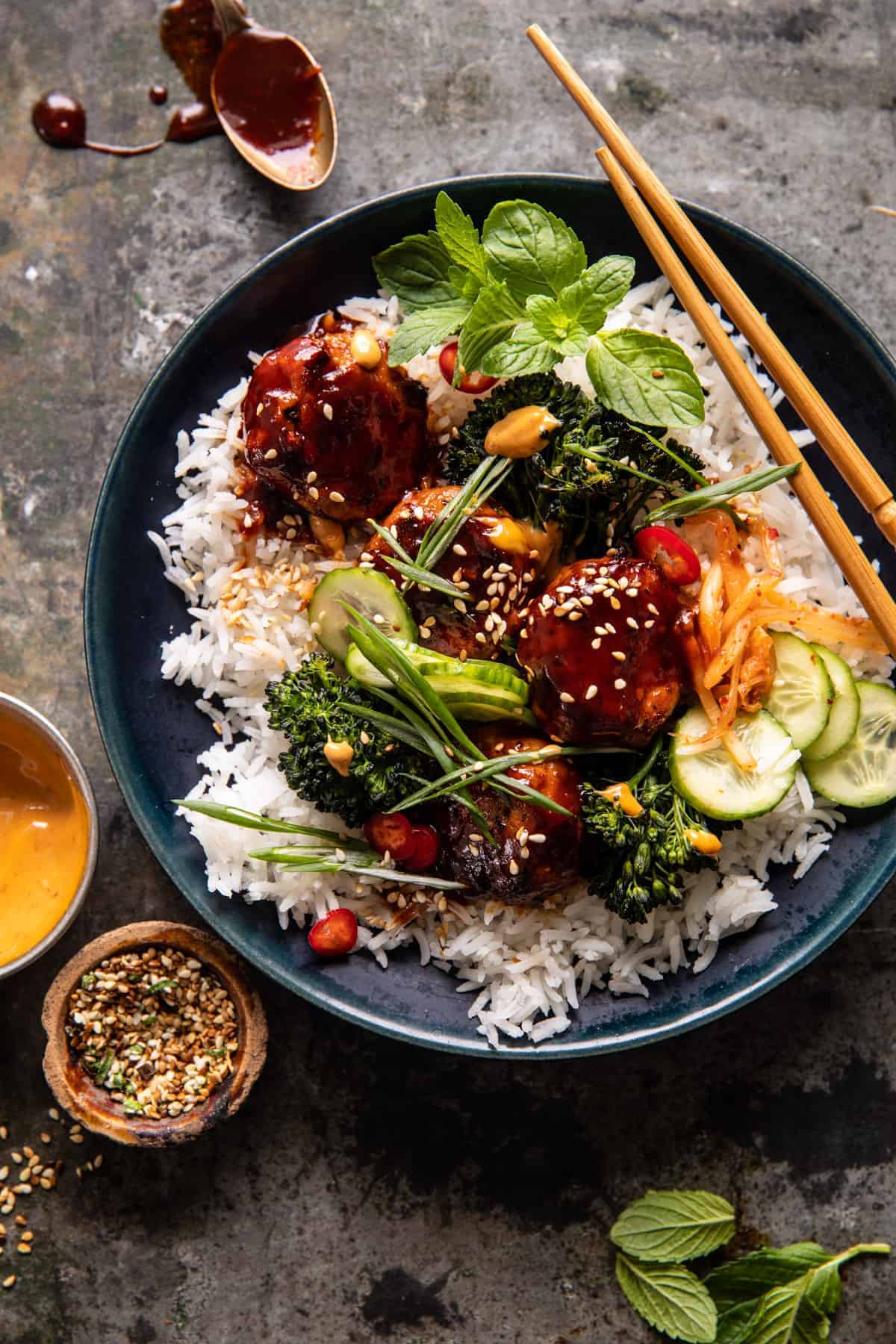
For the meatballs:
- 1 ½ lbs lean ground beef
- 2 tablespoons soy sauce
- 1 tablespoon minced garlic
- 1 teaspoon minced ginger
- 2 green onions chopped finely, or 2 tablespoons finely chopped white onion
- 2 teaspoons sesame oil
- ½ teaspoon black pepper
- 1 tablespoon granulated sugar
- 2 tablespoons gochujang
- 1 large egg
- ¾ cup panko breadcrumbs
For the glaze:
- 3 tablespoons gochujang
- 2 tablespoons rice vinegar
- 2 teaspoons sesame oil
- 1 tablespoon minced garlic
- 5-6 tablespoons rice syrup
For garnish:
- Sesame seeds
- Green onions, chopped
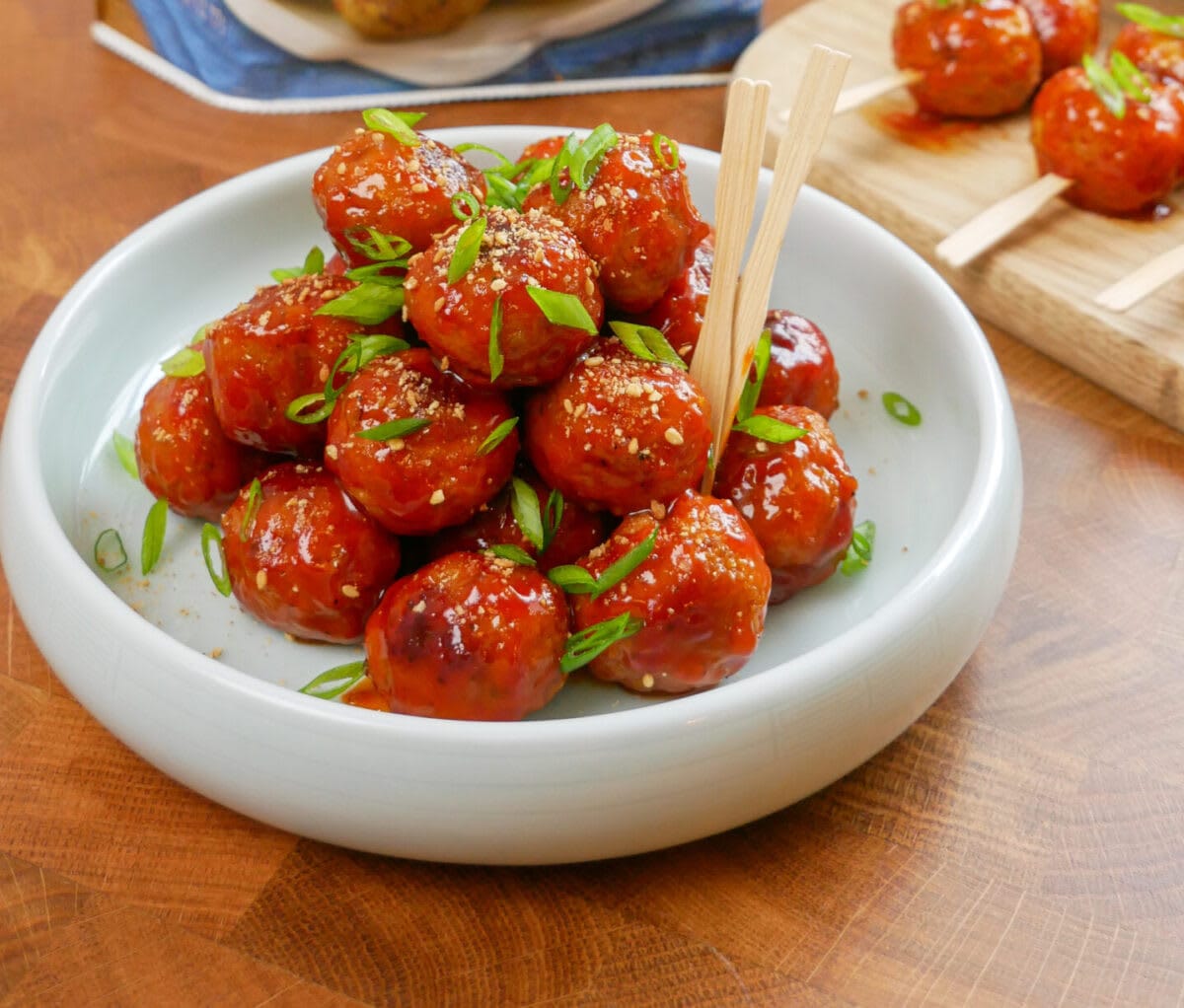
Steps
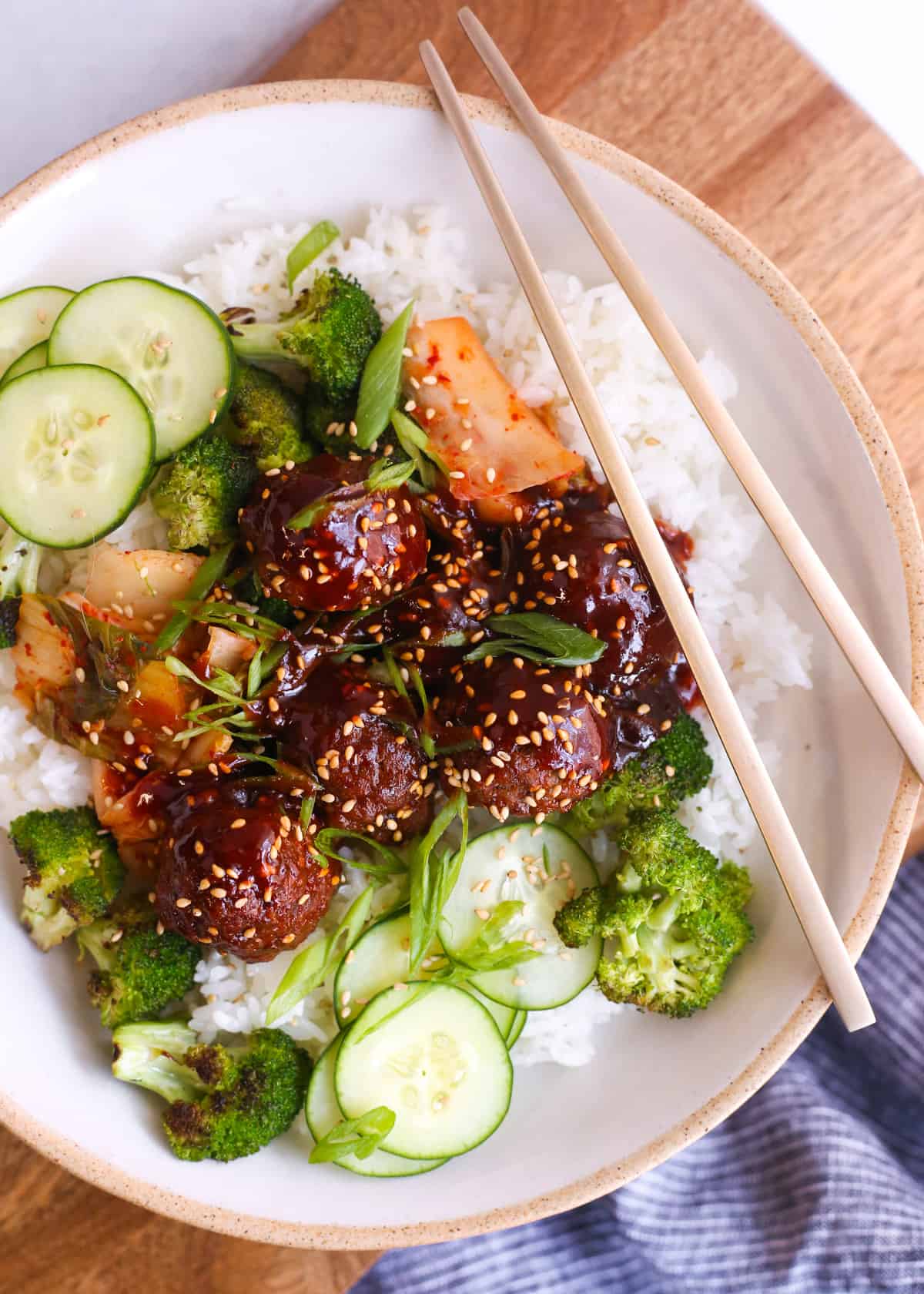
- Preheat oven to 425°F (218°C). This high temperature ensures a nice caramelized exterior while keeping the inside juicy. Make sure your oven is fully preheated before adding the meatballs.
- Prepare a large rimmed baking sheet by lining it with aluminum foil. The foil prevents sticking and makes cleanup much easier, as the meat juices and sugars from the gochujang can caramelize and be difficult to scrub off.
- In a large mixing bowl, combine all meatball ingredients: ground beef, soy sauce, garlic, ginger, onion, sesame oil, black pepper, granulated sugar, gochujang, egg, and panko breadcrumbs. Use clean hands for the most effective mixing—you’ll feel when everything is properly incorporated without overmixing.
- Mix gently but thoroughly until all ingredients are well incorporated. Overmixing can make the meatballs tough, so stop once everything is evenly distributed. The mixture should hold together but still feel somewhat light.
- Form the meat mixture into small balls using a tablespoon or small ice cream scoop (about 1½-inch diameter). Consistent sizing ensures they’ll cook evenly. If the mixture sticks to your hands, lightly wet your palms with cold water.
- Roll each portion between your palms to create smooth, round meatballs and place them onto the prepared baking sheet, leaving about 1 inch of space between each. This spacing allows heat to circulate properly.
- Bake at 425°F (218°C) for 15-20 minutes, until fully cooked. The meatballs should reach an internal temperature of 160°F (71°C) when tested with a meat thermometer. They should be browned on the outside but still juicy inside.
- While the meatballs bake, prepare the gochujang glaze. In a medium skillet or saucepan, combine gochujang, rice vinegar, sesame oil, minced garlic, and rice syrup. If you don’t have rice syrup, honey or corn syrup can work as substitutes, though the flavor will be slightly different.
- Cook the glaze over medium heat for about 3-4 minutes until it becomes bubbly and slightly thickened. The sauce should coat the back of a spoon but still be pourable. If it becomes too thick, add a tablespoon of water to thin it out.
- Once the meatballs are cooked, transfer them directly to the pan with the glaze. Gently toss or stir to coat each meatball evenly with the sticky, shiny sauce. Be careful not to break the meatballs.
- Remove from heat once all meatballs are well-coated, which should take about 1-2 minutes. The sauce will continue to thicken slightly as it cools.
- Garnish generously with sesame seeds and freshly chopped green onions for added texture, color, and flavor.
- Serve immediately with steamed rice for a main dish, or on their own as an appetizer. For presentation, consider serving with small toothpicks if offering as a party appetizer.
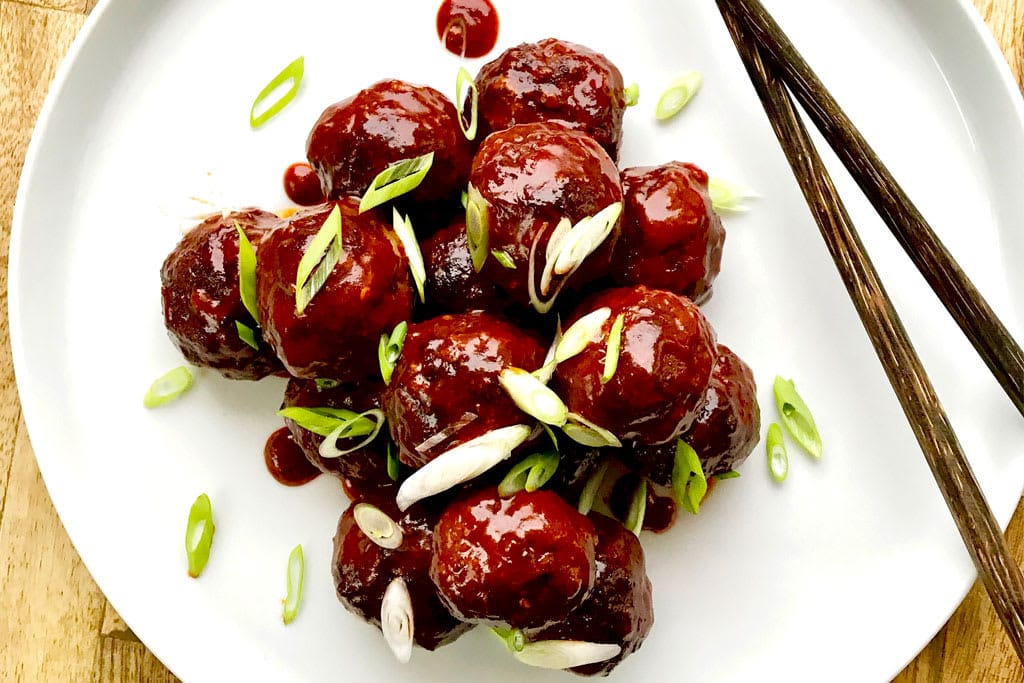
Smart Swaps
- Use ground turkey or chicken instead of beef for a lighter version (reduce cooking time by 2-3 minutes as they cook faster)
- Replace ¼ cup of the panko with finely crushed pork rinds for a lower-carb option
- Substitute honey for rice syrup in the glaze (use 4-5 tablespoons as honey is sweeter)
- Try gochugaru (Korean chili flakes) mixed with a bit of miso paste if you can’t find gochujang
Make It Diabetes-Friendly
- Replace the sugar in the meatballs with 1 teaspoon monk fruit sweetener (reduces carbs by approximately 4g per serving)
- For the glaze, use 3 tablespoons sugar-free maple syrup plus 1 tablespoon sugar-free apricot preserves instead of rice syrup (reduces carbs by approximately 8g per serving)
- Serve with cauliflower rice instead of regular rice to lower the glycemic impact by about 70%
- Increase the protein-to-carb ratio by using 2 lbs of meat with the same amount of breadcrumbs
- Portion into 12 smaller meatballs instead of 6 larger ones to better control blood sugar response
Pro Tips
- Chill the meat mixture for 30 minutes before forming meatballs for easier handling and better texture
- For extra umami, add 1 teaspoon of fish sauce to the meat mixture
- The meatballs freeze beautifully—make a double batch and freeze half before glazing for a quick future meal
- If you prefer extra spicy, add 1 teaspoon of gochugaru (Korean chili flakes) to both the meatballs and the glaze
- For a crispier exterior, brush meatballs with a little oil before baking and broil for the final 1-2 minutes